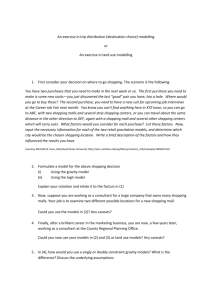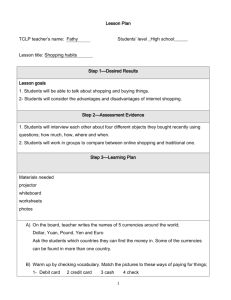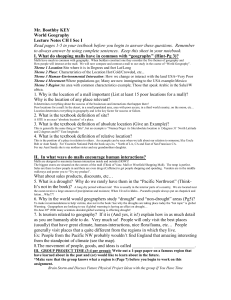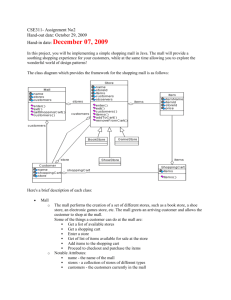Conversational Spanish Topics/Themes
advertisement
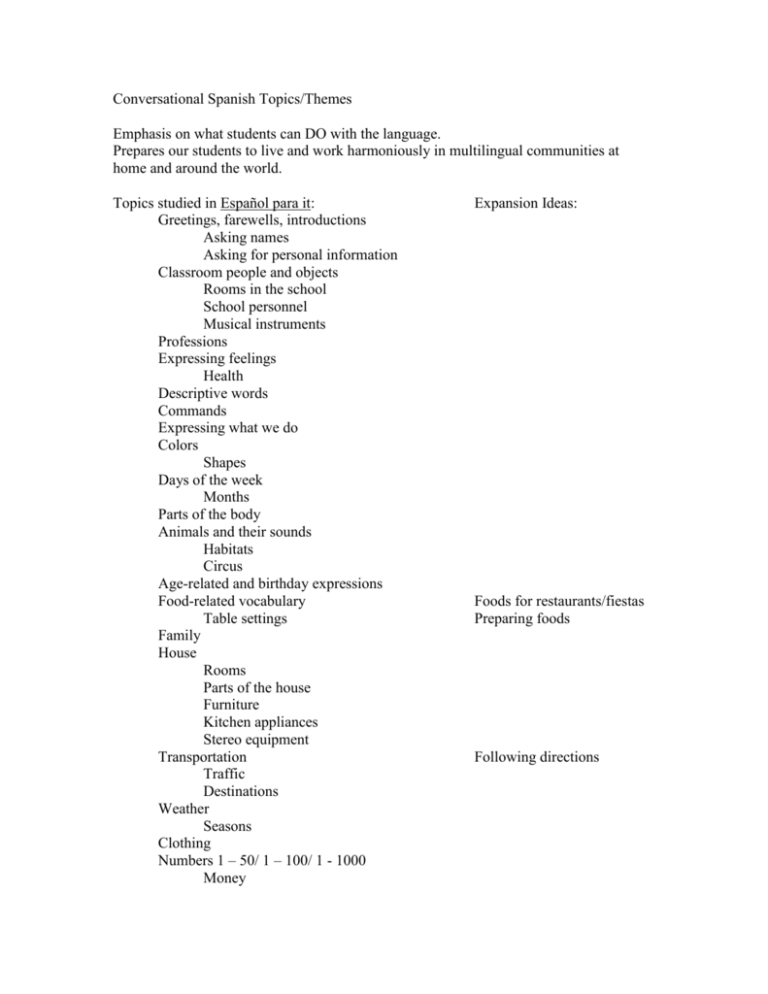
Conversational Spanish Topics/Themes Emphasis on what students can DO with the language. Prepares our students to live and work harmoniously in multilingual communities at home and around the world. Topics studied in Español para it: Greetings, farewells, introductions Asking names Asking for personal information Classroom people and objects Rooms in the school School personnel Musical instruments Professions Expressing feelings Health Descriptive words Commands Expressing what we do Colors Shapes Days of the week Months Parts of the body Animals and their sounds Habitats Circus Age-related and birthday expressions Food-related vocabulary Table settings Family House Rooms Parts of the house Furniture Kitchen appliances Stereo equipment Transportation Traffic Destinations Weather Seasons Clothing Numbers 1 – 50/ 1 – 100/ 1 - 1000 Money Expansion Ideas: Foods for restaurants/fiestas Preparing foods Following directions Time Sports and other activities Countries/Continents Geography Buildings Parts of buildings Importance of studying a second language Stores and buildings around town Locations/following street Directions Methods: Flashcards, posters, visuals Technology Songs Games Rhymes, tongue twisters Total Physical Response / Storytelling Newspapers Gestures/body language Dialogues/skits Mock phone conversations Listening to music Hispanic holidays Themes: At the tourist office o Create a tourist office which offers brochures listing hotels, emergency services, restaurants, stores, transportation information, maps of the area and special events. o Students will brainstorm what aspects of a typical tourist office they need for their creation. o Students give customers directions to places. o Students can work together to write to a chosen tourist information center in a selected region to request information and brochures. Creating a shopping mall o Students create a new shopping mall for a specific region in a target language country. o Compare shopping there to shopping in the US. o The imaginary mall has to appeal to many different types of shoppers, include restaurants and merchandise that is suitable for the location. o Must reflect the culture being studied – not American culture. o Students will learn idiomatic expressions related to shopping. o Students can use their artistic talents to design advertisements, store logos, etc. Discovering a country o Explore music from the specific country. o Conduct research on economics, culture, history, politics, geography, etc. o Compare the “discovered country” to the US. Latin American Geography o Learn and use basic geography terms. o Use description adjectives to tell about places of interest. o Create relief maps and flags. A day in Madrid (or any city) o Locate 5 – 6 places of interest. o Plan a trip lasting one whole day. o Students must research costs and stick to their pre-decided budget. Include entrance fees, lunch, shopping, transportation, etc. o Compare meal times, transportation, food, prices and products. Where are you? o Each team is given a set of directions but each set is in a different numerical order. One student from each team leaves at the same time with one set of directions, different from the others. They follow the directions and return to tell the teacher where they arrived. o This can also be done with maps and written directions. Students start at a certain point, follow the directions given and tell where they end up.


